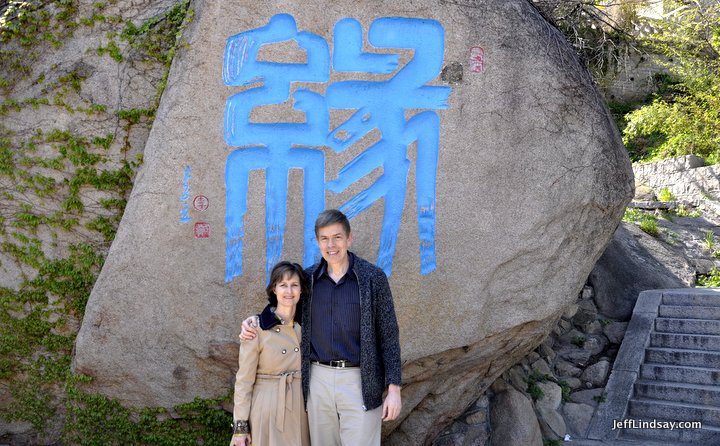One of the most effective and interesting arguments against the Book of Mormon is that it quotes from the disputed ending of the Gospel of Mark. In Mormon 9:22-25, Mormon quotes words spoken by Christ to His disciples in the New World that gave them essentially the same commission that Christ gave His apostles at the end of the Gospel of Mark in Mark 16:15-18: go preach the Gospel, he that believes and is baptized will be saved, and signs will follow. Not a problem, right? After all, Christ was often teaching the same things in the New World that He taught in the Old, just like the Sermon on the Mount, so why should we worry about also using His own words from Mark?
The problem–hang on to your testimonies, folks–is that the quoted words from Mark should not be in the Bible and are a late, spurious addition, according to the consensus of most Bible scholars. The two earliest, extant New Testament manuscripts both have the Gospel of Mark ending at Mark 16:8 with two women amazed and afraid as they stand before the empty tomb. According to modern scholars, the following verses, known as the “longer ending of Mark,” covering the appearance of Christ to Mary and then the apostles and the great commission to preach the Gospel to every creature, should not be there and may not have been inserted into some manuscripts until much later. So what’s it doing in the Book of Mormon, ascribed to Christ in His teachings to the disciples? The critics can chortle and say too bad Joseph wasn’t more of a bible scholar before he plagiarized a completely bogus quotation from Christ.
Fortunately, very recent scholarship on the longer ending of Mark provides many compelling reasons to accept the disputed longer ending after all. It’s a fascinating story with many lessons for students of the Bible and the Book of Mormon that I’ll be covering here in several future posts.
For those interested in this matter, the key resource I recommend, available in both print and for Kindle, is Nicholas P. Lunn’s The Original Ending of Mark: A New Case for the Authenticity of Mark 16:9-20 (Eugene, OR: Pickwick Publications, 2014). Lunn demonstrates how to dig deeply into the scriptures and explore them from many independent lines of analysis. Also see James Snapp, Jr., Authentic: The Case for Mark 16:9-20: 2016 Edition, with extensive information about early Christian references to the longer ending of Mark. Cases for and against the longer ending are provided by four differing authors in Perspectives on the Ending of Mark, ed. David Alan Black (Nashville, TN: Broadman and Holman, 2008), though the analysis in favor of the longer ending lacks the benefit of the extensive foundation provided by Nicholas Lunn’s later work.
Here is the vulnerable passage from Mormon 9:22-25:
22. For behold, thus said Jesus Christ, the Son of God,
unto his disciples who should tarry, yea, and also to all his disciples,
in the hearing of the multitude: Go ye into all the world, and preach
the gospel to every creature;23. And he that believeth and is baptized shall be saved, but he that believeth not shall be damned;
24. And these signs shall follow them that believe — in my name shall
they cast out devils; they shall speak with new tongues; they shall take
up serpents; and if they drink any deadly thing it shall not hurt them;
they shall lay hands on the sick and they shall recover;25. And whosoever shall believe in my name, doubting nothing, unto him
will I confirm all my words, even unto the ends of the earth.
Here is the related portion from Mark 16:
15. And he said unto them, Go ye into all the world, and preach the gospel to every creature.
16. He that believeth and is baptized shall be saved; but he that believeth not shall be damned.
17. And these signs shall follow them that believe; In my name shall they cast out devils; they shall speak with new tongues;
18. They shall take up serpents; and if they drink any deadly thing, it shall not hurt them; they shall lay hands on the sick, and they shall recover.
19. So then after the Lord had spoken unto them, he was received up into heaven, and sat on the right hand of God.
20. And they went forth, and preached every where, the Lord working with them, and confirming the word with signs following. Amen.
If these verses were made up by some scribe to round out the abrupt ending of Mark at Mark 16:8, and if Jesus did not actually say this to his apostles in the New World, it would seem very odd that Mormon would quote from the teachings of Christ to his New World disciples and end up with the very same content given in the disputed longer ending of Mark. It is an issue that needs to be considered. One could argue, as some LDS people have, that the Book of Mormon is somehow an expanded text that builds on ancient gold plate material or, more extremely, at least on ancient “truthy” ideas, with lots of Joseph’s added commentary and thoughts taken from modern sources, but this is unsatisfying and is inconsistent with the data we have about the translation process, both in terms of the mechanics of dictation and composition, as well as the structure and language found in that text.
Fortunately, in spite of an ongoing scholarly “consensus,” there is surprisingly impressive evidence that the longer ending of Mark is authentic. Before I explore some of those details, let me first point out that over 95% of the existing ancient Greek manuscripts of the New Testament have the longer ending of Mark. The problem came with the relatively recent discovery of the two oldest extant manuscripts, the Codex Sinaiticus and the Codex Vaticanus, both of which end at Mark 16:8 and lack the longer ending. These manuscripts, though, differ from our canon in many other ways and need not be assumed to be the best and most accurate manuscripts.
They are the oldest extant manuscripts, yes, but they were not the oldest manuscripts used and quoted by early Christians, and that’s the area where things are especially interesting. Dozens of ancient sources provide evidence that at least multiple portions of the longer ending of Mark were in place before the Codex Sinaiticus and the Codex Vaticanus came into existence. In fact, both of those manuscripts provide evidence that the copyists were at least aware of an alternate ending for Mark (one has an unusually large space after Mark 16:8 as if leaving space for the additional verses, and the other has unusual markings at the end as if to physically prevent insertion of known additional verses).
The case for the longer ending of Mark, as we’ll explore in the near future, includes an impressive array of different lines of thought. The evidence from early Christian writers is impressive. The analysis of individual words, themes, grammatical patterns, parallelism, prophecy and fulfillment, Exodus archetypes, and so on provide a fascinating, multidimensional approach to Mark from an able bible scholar that consistently calls for accepting the integrity of Mark as we now have it. Along the way, there are some interesting approaches that we can also apply to the Book of Mormon to better appreciate some subtleties in that ancient text.
Many scholars feel there is no need to even consider the questions Lunn and other raise about the “consensus” rejection of the longer ending of Mark, but this is truly unfortunate and reminds of some of the human limitations of scholars, no matter how impressive and infallible they may seem. I know, I know, that’s heresy! So be it.











A similar problem exists for Luke 22:43-44, where Jesus sweat drops of blood. This account does not exist anywhere else in the new testament, and the earliest and best new testament manuscripts don't include it. It is, however, in in the Book of Mormon (Mosiah 3:7). BYU professor Lincoln H. Blumell wrote an interesting article regarding this issue.
Again…we have the problem of a word-for-word quotation from the KJV. Why would God send over a word-for-word quotation on the seerstone? Does that mean God wanted it to sound just like it did in the KJV? But if that is the case, then why are other portions of the BoM written in EModE forms that pre-date the KJV?
You apologists have a lot of work to do. You need to start harmonizing all these competing theories. You throw out theory after theory, and yet there is no consistency or harmony between your theories. You guys just can't admit that really, you have no idea what this Book actually is. You certainly don't want to admit that it isn't what it claims to be, so you are left with a mess of confusion and conflicting ideas.
Yet…you will all stand up and bear testimony that the Book of Mormon is true. You don't even know what it means to call that book "true."
I will agree with you on this, EBU. There is confusion in the Mormon world on this issue, and Jeff has not committed one way or the other. And sometimes we run across schizophrenic thinking, and I have seen that in some of what Jeff has written. The question boils down to Skousen's 1998 tight control and loose control. Under loose control — ideas into words — Smith would have had to consult a Bible. Indeed, as you point out, this Mark passage is almost word for word. I think there is an extra "and" in the BofM. And that's about it. So loose control + consulting a Bible works in this instance, since there is hardly any difference. But it is an unsatisfactory view generally since there are almost a thousand differences between biblical and BofM readings, and some sentences are quite different from each other.
EBU, We can also ask, why wouldn't God say the same thing word for word? What is the real problem with a word for word quote by the same person who originally uttered the words? You will just have to ask Him.
Do you have anything substantive to otherwise refute anything Jeff has said? I am afraid you are attacking reflexively here.
Glenn
We need to be careful about making a prior assumptions about how God or Joseph could or should have done the translation, and first seek to understand what the data actually tells us. Tight control is clearly the case in at least some instances. But Joseph's willingness to edit out apparent bad grammar or other problems in the Book of Mormon shows that he was not afraid to be directly involved with the text. Further, the human errors of scribes also show us that there was not divine tight control in the sense of forcing the correct words and spelling upon the printed product. I think Joseph's inspired translation of the Book of Mormon could have elements of both tight and loose control, just as modern translation work is often aided with "tight control" from electronic tools but further shaping and revising by translators when it seems needed.
On Luke 22:43-44, Dr. Lincoln Blumell's article really is excellent and insightful. The reference is: Lincoln Blumell, “Luke 22:43–44: An Anti-Docetic Interpolation or an Apologetic Omission?” TC: A Journal of Biblical Textual Criticism 19 (2014): 1–35. Thanks, Anon, for the lead.
It is available on his website:
http://www.lincolnhblumell.com/wp-content/uploads/2012/02/2014-TC-Journal-of-Biblical-Textual-Criticism-Luke-22.pdf
Jeff, I think you're confused about what tight control is. You're confusing it with iron-clad control. You'd better read Skousen's 1998 JBMS 7.1 article and get some clarity. Also, Skousen has shown that JS's 1837 BofM editing was incomplete and sporadic human editing, that it was not a revealed recension. See his April 2016 presentation on that.